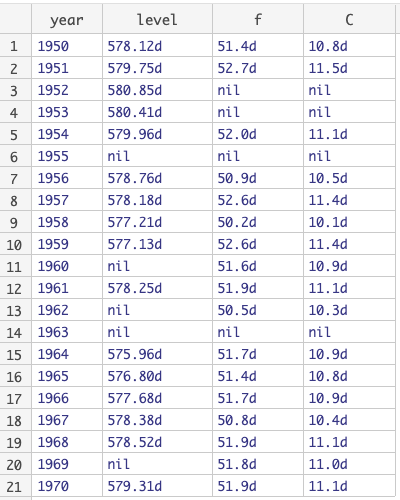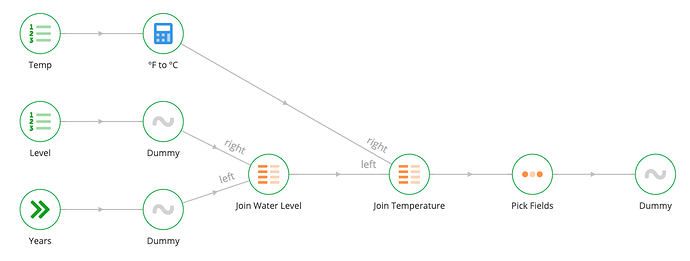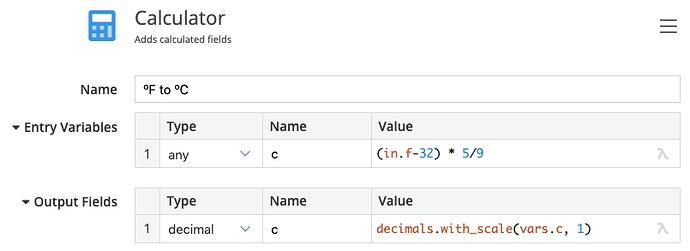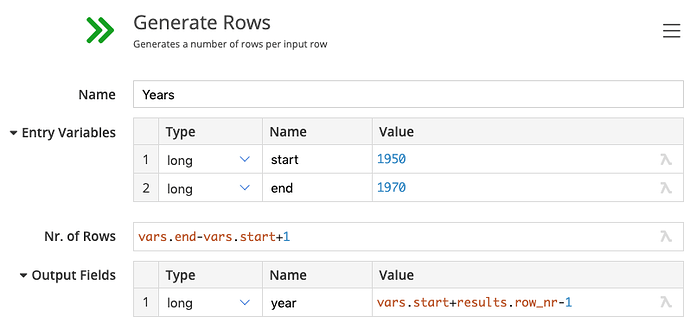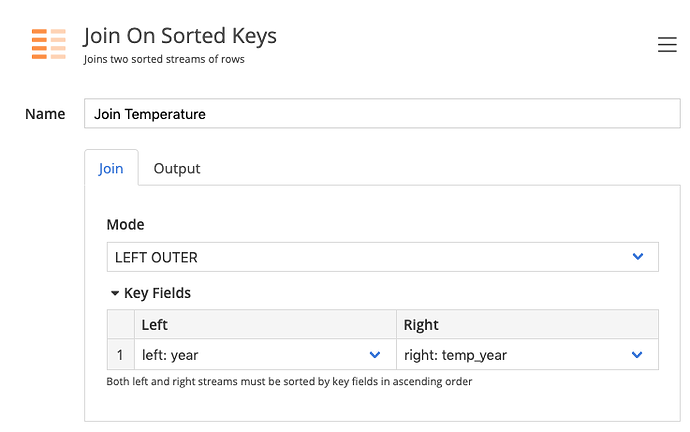For our next challenge, we’re looking at historical environmental data.
We get the average temperature and water level of a deep lake for every year between 1950 and 1970.
Use start.dfl (31.6 KB) as a starting point.
The inputs
The temperature is given in Fahrenheit like so:
1950 51.4
1951 52.7
...
1970 51.9
The water level is given in meters like so:
1950 578.12
1951 579.75
...
1970 579.31
The task
For any given year measurement data may be missing. We want an unbroken sequence of years from 1950-1970 with the associated measurements. If a measurement is missing, we use a nil value.
In addition, we need an new field giving the temperature in ºC.
Desired output
The desired output of our data flow should look like this:
